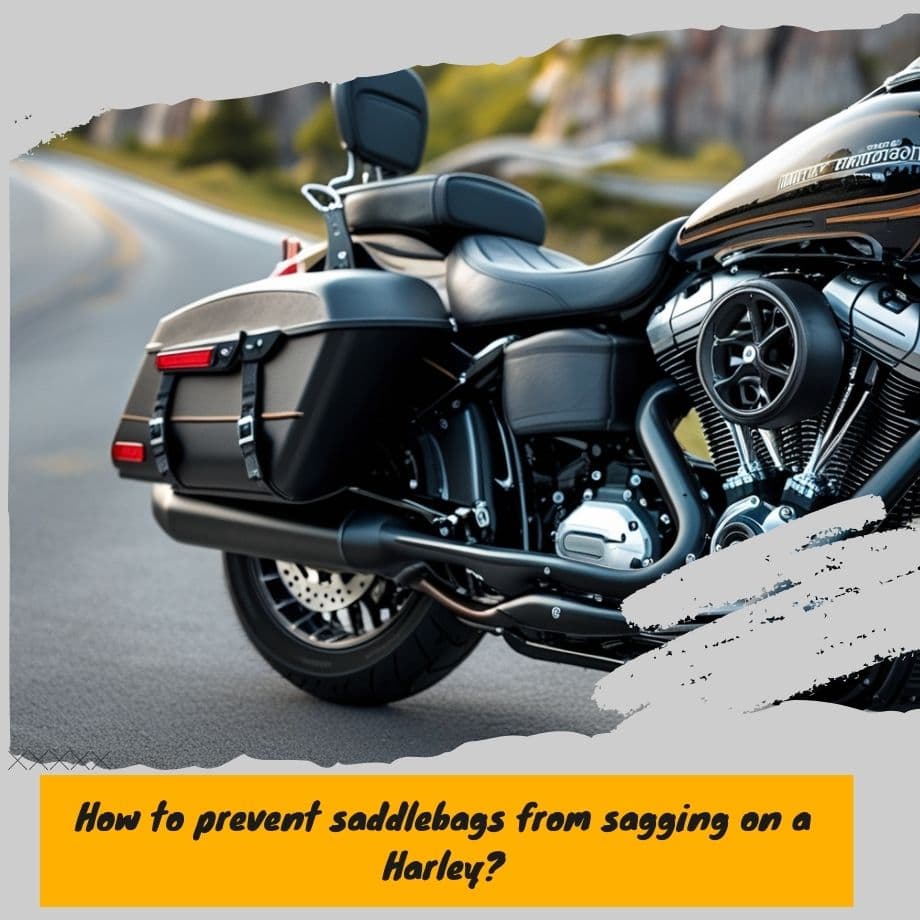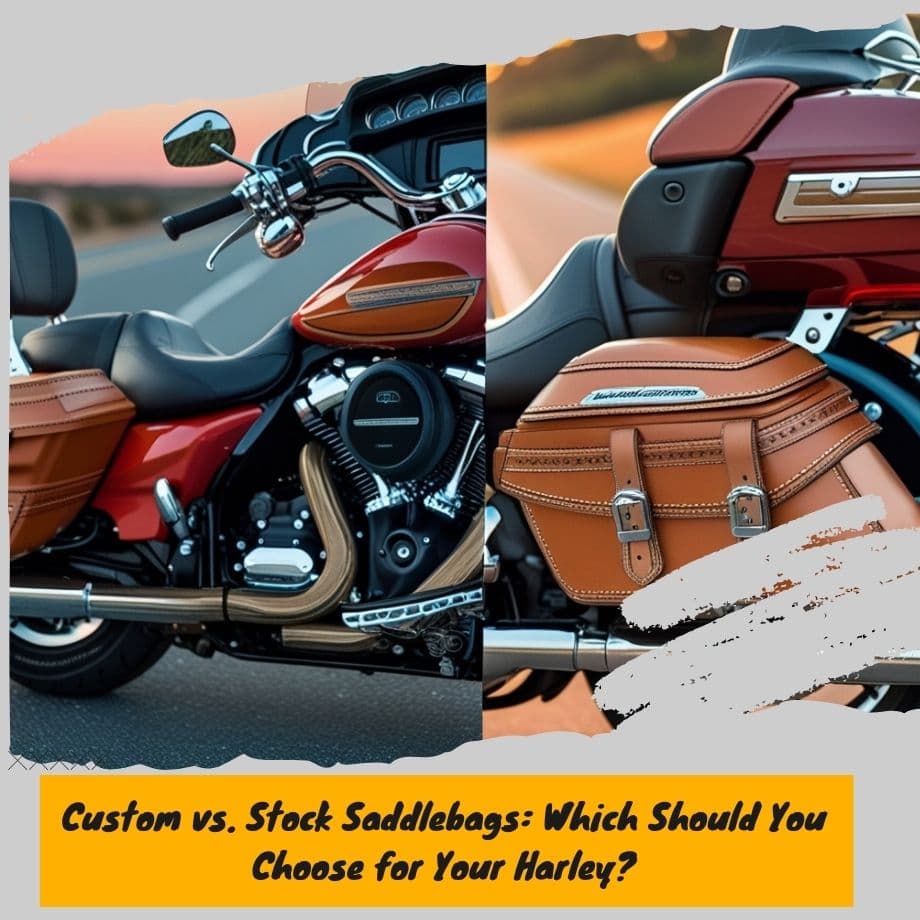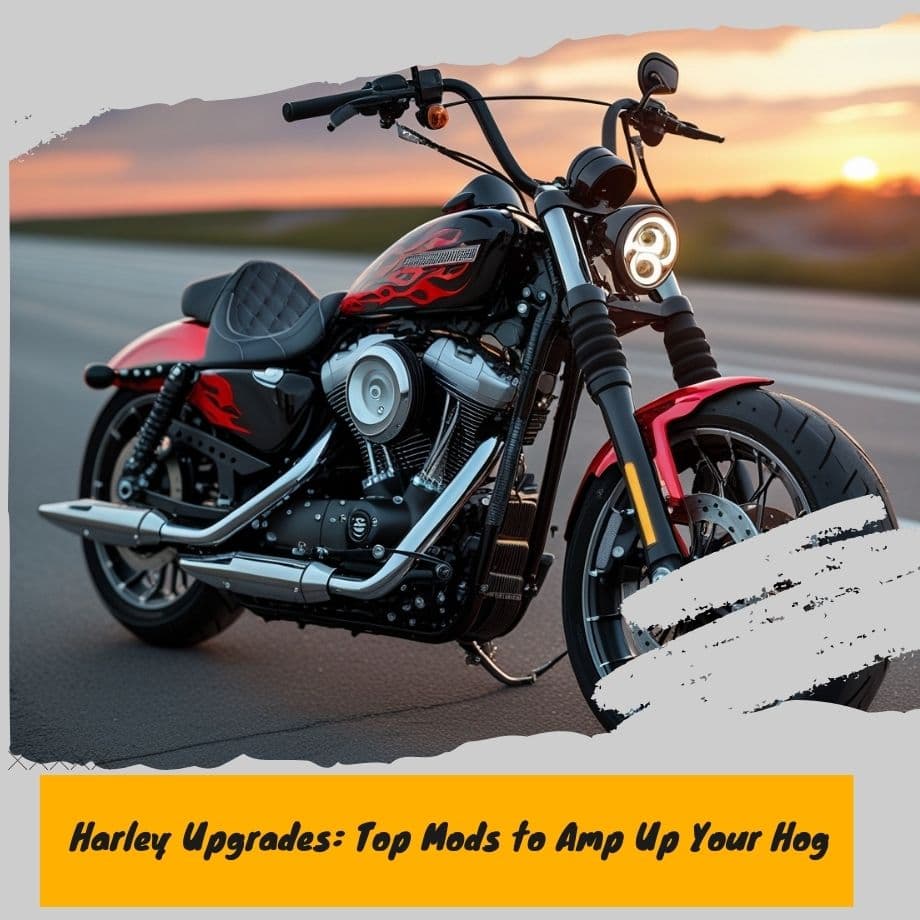5 Tips to Prevent Saddlebag Droop on Your Harley

What are Saddlebags and Why Do They Sag?
Saddlebags are essential accessories for any Harley-Davidson motorcycle, providing much-needed storage space for long rides and extended trips. These leather or synthetic bags are mounted on either side of the rear fender, offering a convenient way to carry extra gear, tools, and personal belongings. However, over time, saddlebags can develop an unsightly sag, detracting from the sleek and stylish appearance of your beloved Harley.
The primary reason for saddlebag sagging is the constant weight and pressure exerted on the mounting points and support system. As you load your saddlebags with items, the weight pulls downward, gradually stretching and deforming the bags' shape. Additionally, the constant vibrations and movements experienced during rides can loosen the mounting hardware, contributing to the sagging issue.
Another factor that can accelerate saddlebag sagging is the natural aging and wear of the materials used in their construction. Leather saddlebags, in particular, can become supple and lose their rigidity over time, leading to a more pronounced sag. Similarly, synthetic materials can degrade due to exposure to sunlight, heat, and environmental factors, compromising their structural integrity.
The Importance of Preventing Saddlebag Sag
Preventing saddlebag sag on your Harley-Davidson motorcycle is crucial for both practical and aesthetic reasons. Sagging saddlebags can not only detract from the sleek and stylish appearance of your bike but can also pose potential safety hazards and lead to premature wear and tear.
From a practical standpoint, saddlebags that sag or hang too low can interfere with the motorcycle's clearance, increasing the risk of scraping or catching on obstacles while riding. This can result in damage to the saddlebags, as well as potential handling issues or loss of control. Additionally, sagging saddlebags can cause uneven weight distribution, which can affect the bike's balance and handling characteristics.
Aesthetically, sagging saddlebags can detract from the overall appearance of your Harley-Davidson, detracting from the clean lines and classic styling that these iconic motorcycles are known for. Well-supported saddlebags maintain a streamlined and polished look, enhancing the visual appeal of your ride.
By taking proactive measures to prevent saddlebag sag, you not only ensure the longevity and proper functioning of your saddlebags but also preserve the stunning appearance and pride of ownership that comes with riding a Harley-Davidson. Keeping your saddlebags properly supported is an essential aspect of maintaining the overall quality and enjoyment of your motorcycle ownership experience.
Check the Mounting Hardware
One of the most common reasons for saddlebag sag on a Harley-Davidson motorcycle is loose or worn mounting hardware. Over time, the constant vibrations and weight of the saddlebags can cause the bolts, screws, and brackets that secure them to the bike to become loose or worn down. Regularly inspecting and tightening the mounting hardware is crucial to prevent saddlebag sag and ensure a secure fit.
Start by checking the bolts or screws that attach the saddlebag mounts to the motorcycle frame. These should be tightened to the manufacturer's recommended torque specifications using a torque wrench. If any bolts or screws are missing or damaged, replace them immediately with the correct replacements from a reputable Harley-Davidson dealer.
Next, inspect the saddlebag mounting brackets themselves. Look for any signs of wear, cracks, or deformation. These brackets are responsible for supporting the weight of the saddlebags and transferring that load to the motorcycle frame. If the brackets are worn or damaged, they may need to be replaced to prevent further saddlebag sag.
It's also important to check the condition of any rubber or plastic bushings that may be used in the mounting system. These bushings help isolate vibrations and prevent metal-on-metal contact, but they can deteriorate over time and contribute to saddlebag sag. Replace any worn or cracked bushings with new ones designed specifically for your Harley-Davidson model.
By regularly inspecting and tightening the mounting hardware, you can catch any potential issues early and prevent more serious saddlebag sag from occurring. This simple maintenance task can help ensure your saddlebags remain securely mounted and looking great for years to come.
Reinforce the Mounting Points
One effective way to prevent saddlebags from sagging on your Harley is to reinforce the mounting points. Over time, the constant weight and vibration can cause the mounting hardware to loosen or the mounting points to weaken, leading to sagging. By adding additional supports or braces, you can distribute the weight more evenly and prevent excessive stress on any single point.
A common reinforcement method is to install saddlebag mounting plates or brackets. These sturdy metal plates are designed to bolt onto the motorcycle's frame, providing a solid and reinforced mounting surface for the saddlebags. They help to spread the load across a larger area, reducing the strain on any one point.
Another option is to use saddlebag support bars or struts. These are metal rods or tubes that connect the saddlebags to the frame or other sturdy points on the motorcycle. They act as additional braces, transferring some of the weight and preventing the saddlebags from sagging or swaying excessively.
When reinforcing the mounting points, it's essential to use high-quality hardware and follow the manufacturer's instructions carefully. Improper installation or the use of substandard materials could compromise the integrity of the reinforcements and potentially lead to further issues.
By taking the time to reinforce the saddlebag mounting points, you can enjoy a more stable and secure ride, with your saddlebags remaining firmly in place and looking their best for years to come.
Use Saddlebag Support Brackets
One of the most effective ways to prevent saddlebags from sagging on a Harley is to install aftermarket saddlebag support brackets. These brackets are designed to provide additional stability and support for your saddlebags, reducing the strain on the mounting points and minimizing the risk of sagging over time.
Saddlebag support brackets typically consist of sturdy metal rods or bars that extend from the saddlebag mounts to the frame or other secure points on the motorcycle. They act as a reinforcement system, distributing the weight of the saddlebags more evenly and preventing them from pulling downward on the mounting points.
Installing saddlebag support brackets is generally a straightforward process, but it's essential to follow the manufacturer's instructions carefully. Most brackets are designed to be compatible with specific Harley-Davidson models, so ensure you purchase the correct brackets for your bike.
When installing saddlebag support brackets, it's crucial to ensure they are securely mounted and properly aligned. Any looseness or misalignment can compromise their effectiveness and potentially lead to saddlebag sag or other issues.
In addition to preventing sagging, saddlebag support brackets can also provide added protection for your saddlebags in the event of a tip-over or minor accident. By distributing the weight and impact forces more evenly, the brackets can help minimize damage to the saddlebags and their mounting points.
Overall, investing in high-quality aftermarket saddlebag support brackets is a simple and effective solution for Harley owners looking to keep their saddlebags in top condition and prevent unsightly sagging over time.
Adjust the Saddlebag Load Distribution
Proper load distribution is crucial for preventing saddlebag sag on your Harley. Unevenly loaded saddlebags can cause unbalanced weight, leading to excessive strain on one side and premature sagging. Here are some tips for evenly distributing the load:
- Pack heavier items low and towards the center of each saddlebag. This keeps the weight closer to the mounting points, reducing leverage and strain.
- Distribute weight equally between the left and right saddlebags. Significant imbalances can cause the bike to lean to one side and accelerate saddlebag sag.
- Use saddlebag liners or packing cubes to organize your items and prevent them from shifting during rides, which can throw off the weight distribution.
- If carrying bulky items, try to balance them out with smaller, denser items on the opposite side to maintain an even load.
- Avoid overloading your saddlebags beyond their weight capacity, as this can overwhelm the mounting system and cause premature sagging or failure.
By carefully packing your saddlebags and maintaining an even weight distribution, you can minimize stress on the mounting points and prevent unsightly sagging, ensuring your Harley looks great and rides smoothly for years to come.
Consider Upgrading to Rigid Saddlebags
One of the most effective ways to prevent saddlebag sag on your Harley-Davidson motorcycle is to upgrade to rigid, self-supporting saddlebags. Unlike traditional soft saddlebags that rely on the mounting hardware and straps to maintain their shape, rigid saddlebags are designed with a sturdy, often fiberglass or plastic, construction that keeps them upright and in place.
Rigid saddlebags are typically more expensive than their soft counterparts, but they offer several advantages beyond just preventing sag. They are more durable and resistant to wear and tear, providing better protection for your cargo. Many rigid saddlebag models also offer increased storage capacity, allowing you to carry more gear on your rides.
When upgrading to rigid saddlebags, it's important to choose a reputable brand and model that is specifically designed for your Harley-Davidson model. Proper fitment is crucial to ensure a secure and stable installation. Some popular rigid saddlebag options for Harley owners include those from brands like Vikingbags, Kuryakyn, and Harley-Davidson's own line of accessory saddlebags.
It's also worth noting that while rigid saddlebags effectively eliminate sag, they may add more weight to your motorcycle, which can impact handling and performance. Be sure to consider the weight and balance of your bike when choosing and loading rigid saddlebags.
Maintain Proper Tire Pressure
Maintaining proper tire pressure is crucial for preventing saddlebag sag on your Harley-Davidson motorcycle. When your tires are underinflated, they can cause excessive flexing and bouncing, which can put additional strain on the saddlebag mounts and lead to premature sagging.
Properly inflated tires provide a smoother ride and better stability, reducing the stress on the saddlebag mounting points. The recommended tire pressure for your Harley can be found in the owner's manual or on the tire sidewall. It's essential to check and adjust the tire pressure regularly, especially before long rides or when carrying heavy loads in your saddlebags.
Underinflated tires not only contribute to saddlebag sag but can also negatively impact your motorcycle's handling, braking performance, and fuel efficiency. Overinflated tires, on the other hand, can lead to a harsh ride and increased wear on the tires and suspension components.
To ensure optimal tire pressure, invest in a high-quality tire gauge and check the pressure when the tires are cold (before riding). If you need to adjust the pressure, do so before your ride, and remember to recheck the pressure after a few miles to ensure it's within the recommended range.
By maintaining proper tire pressure, you'll not only help prevent saddlebag sag but also improve your overall riding experience, safety, and the longevity of your tires and motorcycle components.
Periodically Inspect for Wear and Damage
Regular inspections are crucial to ensure the longevity and safety of your Harley's saddlebags. Over time, constant exposure to the elements, vibrations, and the weight of the load can take a toll on the saddlebags and their mounting hardware. It's essential to periodically check for signs of wear, cracks, or damage that could compromise the structural integrity of the saddlebags or their attachment points.
Start by visually inspecting the saddlebags themselves, looking for any cracks, tears, or signs of excessive wear in the leather or other materials. Pay close attention to the seams, zippers, and any areas that experience high stress or friction. If you notice any significant damage, it's best to replace the saddlebags to avoid potential failures or accidents on the road.
Next, carefully examine the mounting hardware, including the brackets, bolts, and any other components that secure the saddlebags to your Harley. Check for any signs of loosening, corrosion, or damage that could weaken the mounting system. Tighten any loose bolts or hardware, and consider replacing any components that show excessive wear or damage.
It's also a good idea to inspect the mounting points on your motorcycle's frame or rear fender. Look for any cracks, dents, or other signs of stress that could compromise the strength of these attachment points. If you notice any significant damage, it's best to have a professional mechanic or Harley-Davidson technician evaluate the issue and recommend the appropriate repairs or reinforcements.
By regularly inspecting your saddlebags and their mounting hardware, you can catch potential issues early and take proactive measures to prevent saddlebag sag or failure. This simple maintenance routine can help ensure a safe and enjoyable riding experience while protecting your valuable cargo and extending the lifespan of your Harley's saddlebags.
When to Replace Worn or Damaged Saddlebags
No matter how well you maintain your Harley's saddlebags, they won't last forever. Over time, constant exposure to the elements, vibrations from the road, and the weight of carrying cargo will take its toll. Eventually, you'll need to replace your saddlebags due to excessive wear or damage.
Some signs that it's time for new saddlebags include:
- Cracked or torn leather/vinyl
- Broken or missing mounting hardware
- Sagging or distorted shape, even when empty
- Rust or corrosion on metal components
- Worn or damaged zippers/latches
While minor scuffs or scratches are cosmetic issues, larger cracks, holes, or structural damage compromise the saddlebags' integrity and ability to securely hold your belongings. Riding with severely worn saddlebags risks items falling out and getting lost or damaging your bike.
It's better to be proactive and replace saddlebags before they completely fail. Doing so ensures your gear stays secure and prevents potential safety hazards from loose items on the road. With proper care and timely replacements, you can keep enjoying convenient storage while riding in style.







Leave a comment